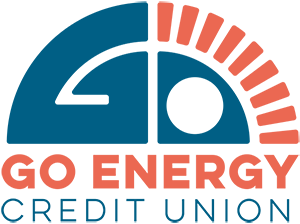For many of us, checking accounts are often a hub for direct deposits, spending money, and paying monthly bills. With so much traffic going through a single account, it can be easy to lose track of your balance, especially if your bills are set to withdraw every month automatically. We’ve rounded up some tips and tricks to help you manage your checking account and, ultimately, maximize your savings.
Create a Financial Calendar
A financial calendar can help you stay ahead and in control of your checking account. Start with a plan and pencil in the things that are routine each month, for example, when payday hits and when monthly bills are taken out or due. This can help you visualize your financial standing throughout the month and help you know when to cut back on spending or when you have a little more spending freedom.
Plan for No-Spend Days
It might be easier said than done, but no-spend days are a great way to keep your checking account healthy while giving yourself a little challenge, too. Whether you’re ordering takeout for the 3rd time in a week or shopping for some new shoes online, spending often becomes a mindless habit. Take on the challenge to fight your temptations and spend a day without swiping your card. A little preparation can go a long way, so plan for your no-spend days by packing your lunch for work and even turning off notifications from your favorite retail apps.
Unsubscribe from Unnecessities
Recurring payments can often get lost in the abyss of your transaction history. Months could go by and you might not even realize you’re still getting charged for a streaming service you thought you canceled after the free trial! It’s time to sift through your transaction history or call your card company to see what’s coming out of your account monthly; only then can you do a subscription cleanse and cancel any charges that aren’t worth it anymore.
Make Bite-Size Money Goals
Slow and steady wins the race, or in this case, achieves financial goals. Before you get ahead of yourself and plan for big-ticket purchases like buying a house or car, set short-term goals that will help you get there quicker. The more your goals are within reach, the easier it is to stick to them. Whether your bite-size goal is to plan a no-spend day during the week or to put a certain amount of money in your savings before your next paycheck, you can make small victories that lead to big outcomes.
Use Cash for Certain Categories
A simple way to stick to your budget is to only allocate a certain amount of money toward leisure spending. But instead of using an app or trusting your word that you’ll limit your spending, take it a step further and only take out cash for certain spending categories.
For example, if you have a bad habit of going out to eat, then set a budget for your food outings and only take out the cash needed to stay in budget. That way, you can get a visual for how much you’ve spent and how much you have left to spend. Even after a few weeks of using this budgeting method, you’ll find yourself more aware of your spending habits.
Research Before Buying
Cutting out leisure spending sounds ideal, but it’s not realistic. For those times when you can’t fight the urge to shop or you need to buy a necessity for the house, be sure to do your research before stepping foot into a store. Just a quick search online can help you compare pricing and direct you toward the cheapest retailer in the game. Beyond that, many big-retail names like Target, Walmart, Best Buy, and more offer in-store pickup, so you can get in and out while avoiding the temptations to shop without purpose.
Above All, Spend Based on Your Income
While this isn’t a trick, it is one of the best tips to manage money. Unlike credit cards, your checking account will always stay true to your actual financial standing. It’s tangible money that can be spent or saved.
Before you rack up a credit card balance beyond what you can afford, it’s best to budget out your monthly expenses and stick to what’s within your range. Consider using a debit card that links directly to your checking account; that way you’re not tempted to spend over your limits. By just dedicating a few minutes of your day to review your checking account and transaction history, you can set yourself up for future financial success.

